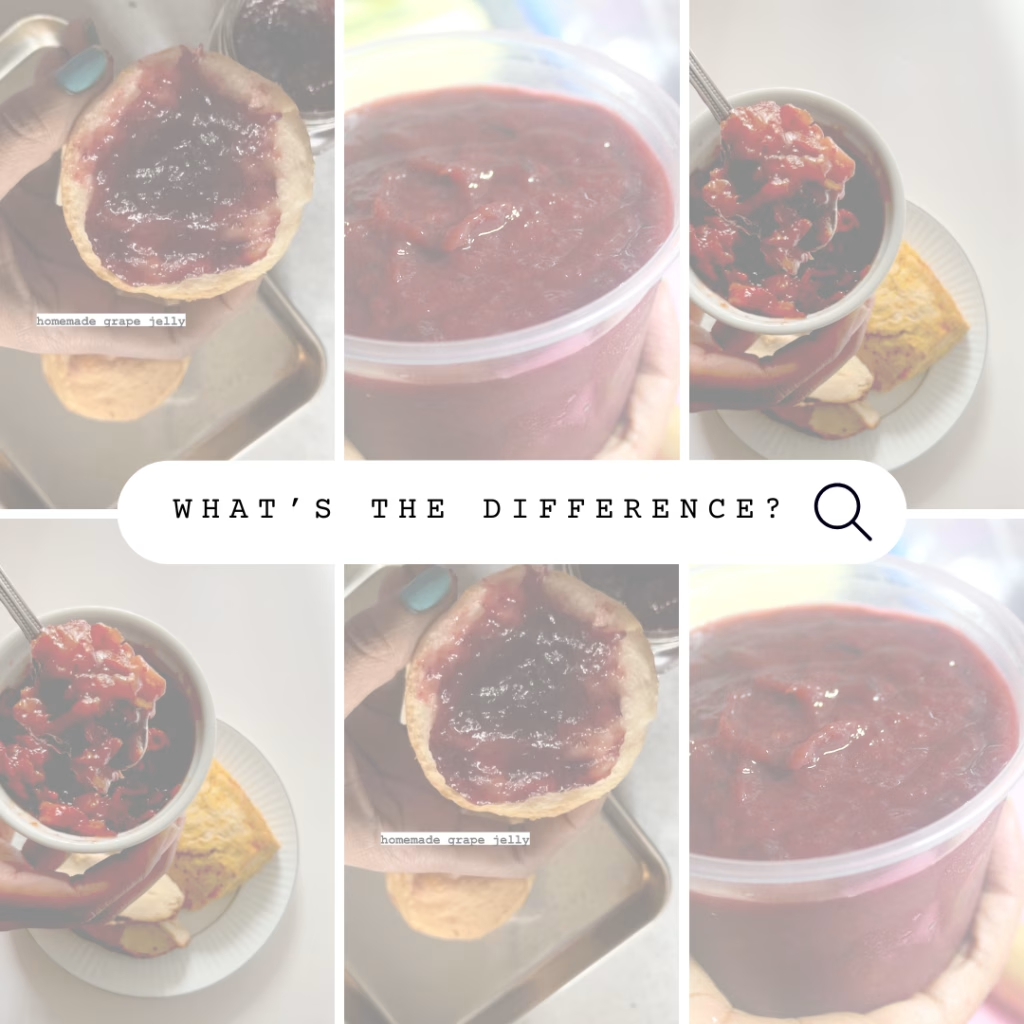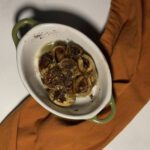As “The Biscuit Lady”, I spend quite a bit of jam making fruit spreads to go onto the biscuits that I make. After a dozen batches of apple butter, a jar of strawberry jam and couple of grape jelly experiments, I think I’m pretty clear on what makes a jam a jam and a jelly a jelly. Below, I’ll explain in the simplest terms I can find the difference between jelly, jam, preserves and butters made from fruit.
What is jelly?
Jelly is made by cooking down just the fruit of a juice. The juice is combined with sugar and pectin (lemon juice) to help thicken it. Once cooled, the result is jelly.
What is jam?
Jam is made from mashed fruit pieces and cooked down with pectin and sugar. Most of us home cooks are used to making jam because it is the simplest, in my opinion, to achieve. You just mash any fruit you want to cook down, put it in a pan with some sugar and lemon juice (which enhances the pectin reaction), and voila! Once it cools, you’ve got jam.
What are preserves?
Preserves are made from the whole fruit being cooked down. Sugar and pectin are added to help thicken the fruit juice that will inevitably be produced by the cooking process.
What is a fruit butter?
A fruit butter is made by cooking down the fruit and then straining the pulp or using an immersion blender to create an ultra-creamy and smooth butter-like texture from the cooked fruit.
What is the difference?
A lot of the difference between these fruit spreads depends on (1) what state the fruit is in when it is being cooked down (whole, in pieces, juiced) along with (2) how the spread is finished (left whole, mashed, or pureed).
What does it take to make other types of spreads?
- Chutney: a South Asian condiment made with a blend of spices, vegetables, and fruit. Chutneys usually have a fruit base, but many non-sweet vegetables can also be used. Once you get the basic concept down, you can experiment with any number of fruits or vegetables.
- Relish: similar to a chutney; however, the base is usually a vegetable and there is typically little to no cooking with heat involved in making a relish.
- Marmalade: a fruit preserve made from the juice and peel of citrus fruits boiled with sugar and water. The pectin in the citrus is usually enough so extra lemon juice doesn’t need to be added like in the previously mentioned fruit preservation methods.


